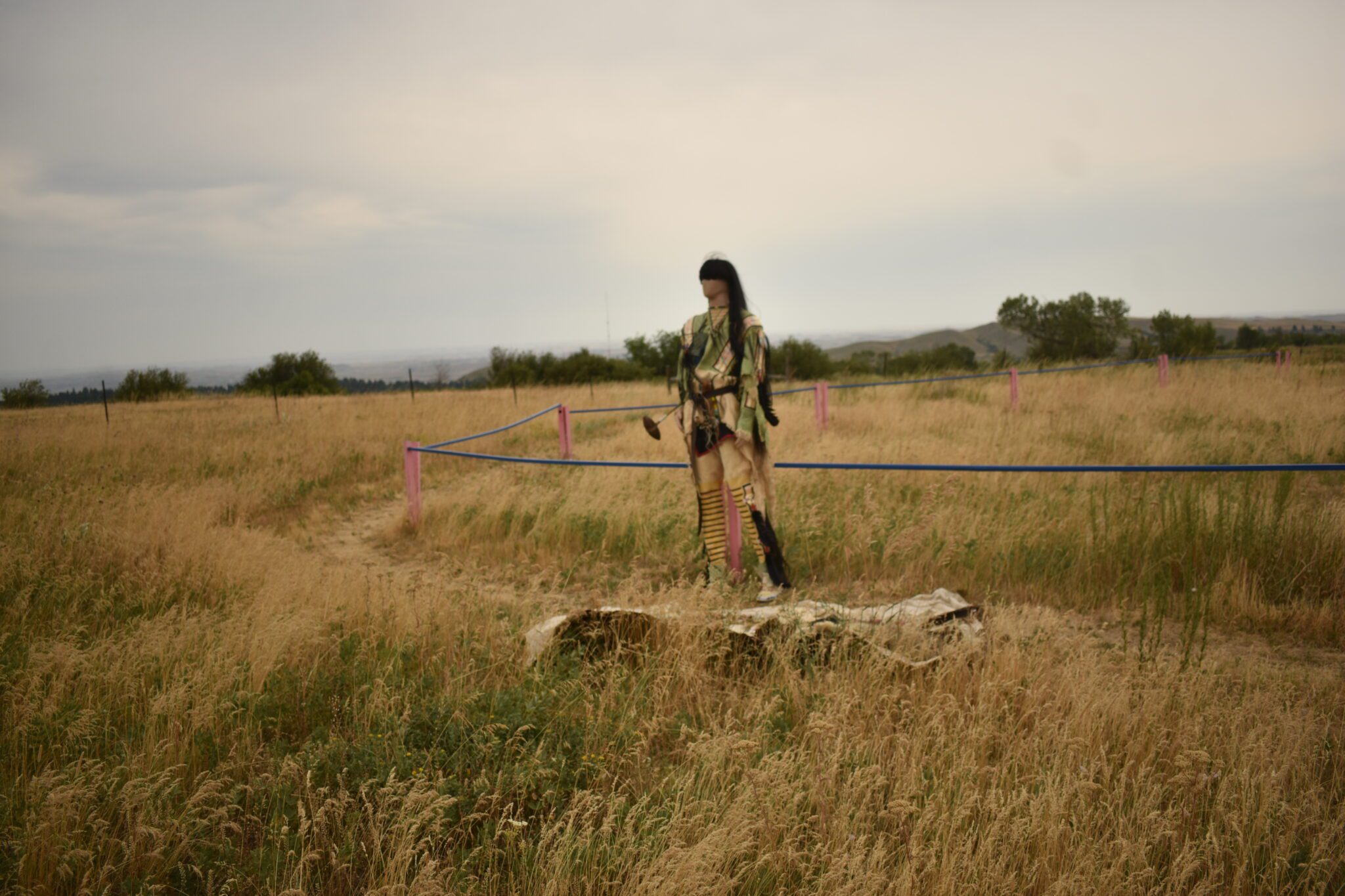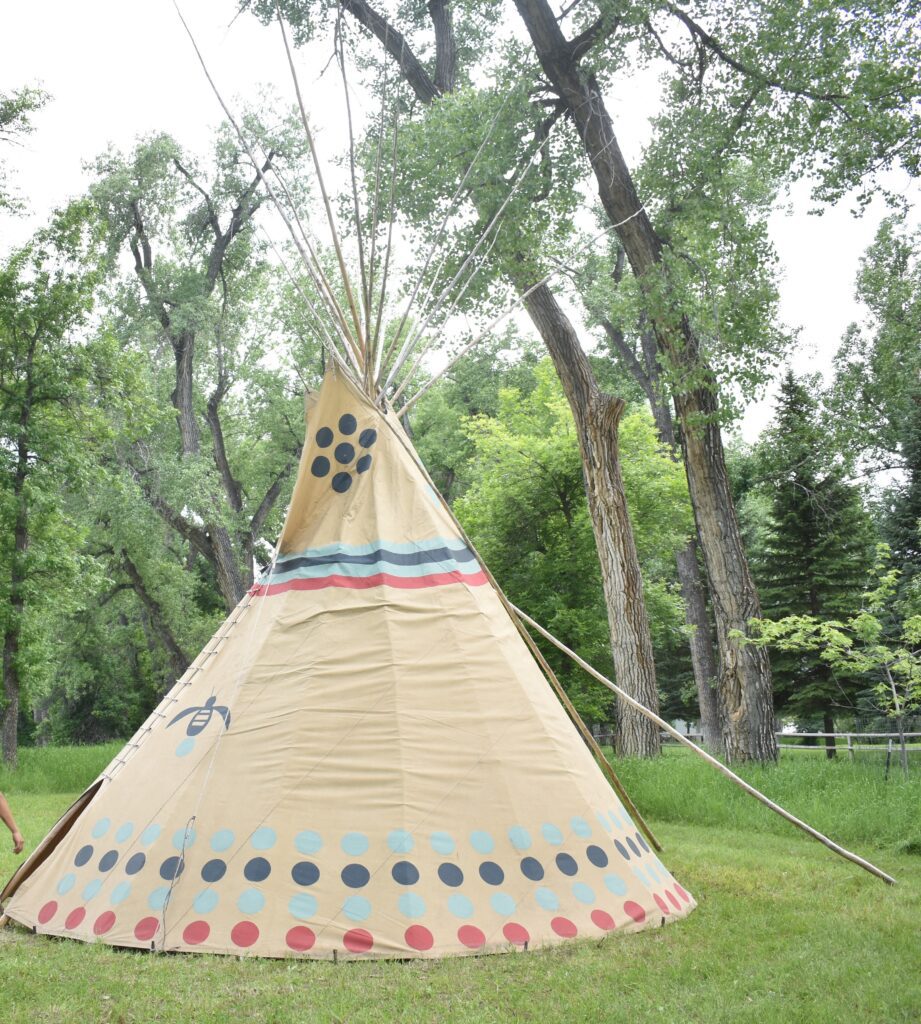News
History: Dull Knife Part Two

In the first part of this history story, we went into the Dull Knife battle that occurred near present day Kaycee, and the first part of Dull Knife’s journey from Oklahoma back to their homelands in Wyoming and Montana. In part two we will look at the rest of the journey, and we learn something about his ‘comrade-in-arms’ Little Wolf.
This from the Cheyenne Daily Sun, October 26, 1878 –Dull Knife Capture at Ft Robinson Cheyennes Captured. Lt Johnson Gets Dull Knife and His Band. But Reports Are Somewhat Conflicting. NEBRASKA – Camp Robinson, Oct, 25— 0n Tuesday afternoon companies B and D, third cavalry, under command of Capt. J. B. Johnson and Lieut. Thompson, while scouting in the sand hills, about seventy miles southeast of this post, came upon about 150 Cheyenne, under Chief Dull Knife. The Indians at first showed fight, but seeing themselves outnumbered gave up, and were brought into Major Carlton’s camp on Chadron Creek, where they were disarmed and their stock taken away, the latter numbering about 140 horses and mules, which were sent here.
Camp Robinson, Oct 25.— A courier from Chadron Creek, this morning reports that when the Indians were informed that their destination was Camp Robinson refused to go and scattering over the prairie commenced digging into rifle pits with their hunting knives. They appeared to have rifles secreted, which they secured, having given up only a few old guns and revolvers. Artillery has been sent from here to shell them from their positions should they continue their resistance. Considerable excitement prevails here over anticipated trouble.
Chicago, Oct. 25.— The following dispatch was just received at military headquarters: Camp of Third cavalry company, Chadron Creek, Neb., Oct 24.— Arrived in camp last night in a violent snowstorm, with 150 prisoners and 140 head of stock. Dull Knife and Old Crow are with them. My party consisted of companies Band D, 3rd cavalry. The latter was commanded by Lieut. J. C. Thompson. Have dismounted the Indians and sent the stock to Camp Robinson under guard. (Signed) Johnson, Captain Third cavalry. Geo. Crook, Brigadier General.
This is from the Star Valley Independent, August 4, 1922, talking about Little Wolf. Stories of Great Indians – Much has been written about Chief Joseph’s retreat which won for him the name of the Indian Xenophon. (Xenophon was a Greek military leader born in Athens. At age 30, he was the commander of one of the largest Greek mercenary armies, the Ten Thousand. He was among the first to describe strategic maneuvers and feints in combat.) Little Wolf (oh kum hkakit), chief of the northern Cheyenne, might well lay claim to that title, for in many respects his dash for freedom was even more remarkable than that of the Nez Perce.
More than 13,000 soldiers at one time or another tried to stop the flight of Little Wolf and his little band of 70 men across the flat plains of Kansas, Nebraska and the Dakotas. “There never was such another journey since the Greeks marched to the sea,” says George Bird Grinnell, the ablest chronicler of this splendid migration. When Little Wolf and his companion in arms, Dull Knife, resolved, in defiance of the government, to lend their people back to Montana, their agent in Indian Territory tried to persuade them to stay one year more.
Cheyenne Daily Leader, March 29, 1879

However, the Cheyennes started, and soldiers were sent after the fugitives. Within a week they had fought them five times but failed to stop them. Then the whole available force of the United States army in the West was called into action and six lines of military barrier were thrown out to stop the fleeing Cheyennes. The last line was far up in Montana, showing what the army thought of these hard riding, hard-fighting warriors. Stopping to fight when they were attacked, then going on after they had beaten off the soldiers, Little Wolfs people kept on until they had cut through three of the military lines.
Here Dull Knife and Little Wolf separated. Dull Knife was captured and imprisoned at Fort Robinson, but Little Wolf kept on until he reached the sand bills of Nebraska. The soldiers were unable to find him. Early in the spring he took up his journey again and his band finally camped on the Little Missouri river in Montana. He had reached his homeland at last. Here he was discovered by Lieut. W. P. Clark, loved and respected by all the Cheyenne as “White Hat,” their friend. Persuaded by Clark, Little Wolf went with him to Fort Keogh where he surrendered to General Miles. The general invited him to enlist us a scout and in spite of the hardships which he had just passed through, Little Wolf accepted the invitation and proved a valuable ally against the hostile Sioux. Little Wolf was finally settled on the Lame Deer reservation and died November 14, 1904.

And years later these items were reported in the newspapers. The Sheridan Daily Enterprise, May 7, 1910 – Notes from Fort McKenzie – The visit yesterday morning from Little Wolf, noted chief of the Cheyenne Indians, carried Colonel Davis back to the old frontier days when the office of the commandant was often filled with representatives of the various tribes. Little Wolf came over from the Rosebud agency and carried with him very strong testimonials from General Miles and other officers showing that he had served faithfully as scout in the troubled Indian times. He is upwards of sixty years old and was accompanied by Gray Eagle and Sharp Teeth and several women. One of the women talked English fluently and acted as interpreter.
The Indians sat around Colonel Davis office for time smoking up his good cigars and telling of the time when all visiting Indians received goodly amounts of rations as gifts at the hands of the “command’ as they styled the commanding officer. Colonel Davis remembered that this was true. Rather than disappoint he paid at the commissary for number of rations for them. Of course, the Indian chief was given the liberty of the post and number of officers gave him shoes and clothing. The attention accorded him was due solely to the splendid letter he carried from officers who were noted Indian fighters.
And in The Sheridan Post, June 21, 1912 – Indians Break Camp – The big bunch of Northern Cheyenne that for several days had been encamped near the old dump grounds east of the city, have razed their tepees, packed their belonging and hiked back to the agency. There were nearly three score Indians in this bunch and apparently, they were here without permission of the agent, for a message was received by Chief of Police Ridgway from Major Eddy, Wednesday, asking him to round them up and start them toward home.

Grasshopper, son of Little Wolf, a famous chieftain, was in charge of the Indians, and he told Chief Ridgway that they were expecting some Southern Cheyennes from Oklahoma, who were coming on a visit, and he begged so hard to he allowed to wait until his friends arrived that the chief gave permission for them to stay until yesterday. Wednesday evening the Southern Cheyennes arrived, and the whole bunch departed on their homeward way rejoicing.


Mike Kuzara
December 10, 2023 at 1:04 pm
It is interesting to note that the US Army General Miles and others who fought the Indians for years went to bat for them and helped them to return to their homeland, albeit, considerably smaller than the original territory they had once occupied.